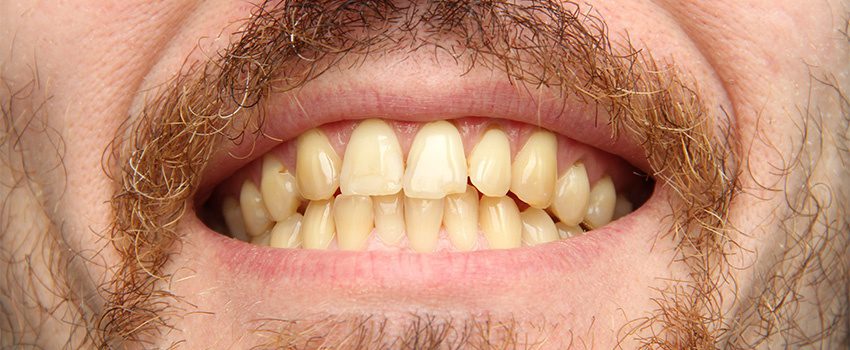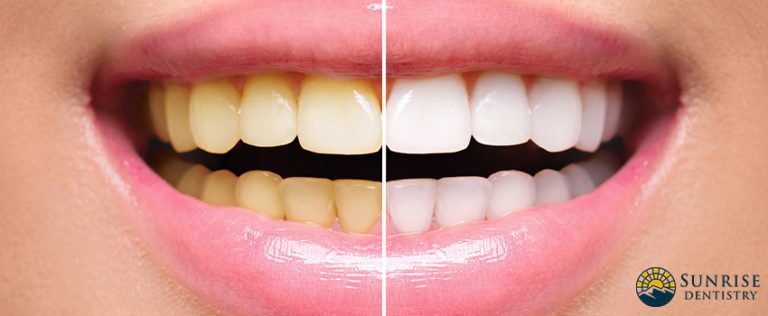Tooth discoloration is a common dental issue that may occur due to several causes, including medications. The good news is that most drug-induced stains are treatable and preventable.
Let’s check what kinds of drugs may cause stained teeth and what you can do to keep your pearly whites healthy and looking their best.
Types of Teeth Staining
To understand tooth discoloration better, let us first discuss the different categories of staining.
Extrinsic tooth discoloration refers to stains that are only affecting the enamel. This is commonly caused by food, drinks, and smoking.
Intrinsic types of staining involve the inner part of the tooth, which makes it more difficult to remove manually using over the counter cleaning and whitening products. Unlike the usual yellowish color, it looks grayish. Tooth decay, excessive fluoride, or any tooth injury commonly cause intrinsic tooth discoloration.
For older people, it is normal to have stained teeth. Once the enamel starts to wear out, it will leave a yellow appearance. In most cases, age-related staining is also induced by both extrinsic and intrinsic factors.
So where can we classify medications? Drugs used locally or systemically are directly linked with both extrinsic and intrinsic tooth discoloration. These medications often contain chromogens, a substance that converts into a dye or other colored compounds. Depending on where these chromogens are deposited, that’s the only time the type of staining involved can be determined.
Which Drugs Commonly Cause Intrinsic Tooth Discoloration?
Medications that stain the outer surface of your teeth may be caused by metallic or non-metallic products. These will cause superficial stains that can be removed via professional cleaning.
Drugs and Oral Solutions Causing Metallic Stains:
While the exact mechanisms of the processes involved in teeth staining remain unclear, it is believed that when metals interact with dental plaque, their sulfide salts will cause stains.
- Drugs containing metallic compounds such as iron supplements may cause a dark brown to black discoloration.
- Users of mouth rinses with copper salts often complain of greenish teeth.
- Potassium permanganate mouthwash, which is used to treat oral candidiasis, causes violet-black stains.
- While fluoride supplements are helpful in the prevention of dental cavities, when taken excessively, it can cause defective tooth mineralization or dental fluorosis, which is characterized by brown-colored teeth. Stannous fluoride mouthwash, a popular desensitizing agent, will also yield brown stains in the teeth.
Drugs and Oral Solutions Causing Non-metallic Stains:
- Antiseptic mouthwashes like Chlorhexidine can produce a brownish stain among people with plaque-covered teeth.
- Other antimicrobial agents, such as Amoxicillin-Clavulanic Acid and Linezolid, are said to cause pseudo-discoloration.
- Glibenclamide, which treats neonates with diabetes, may also cause staining because the ingested chromogens precipitate onto the dental surface.
Several drugs may also cause intrinsic tooth discoloration. The staining may occur before or after the formation and eruption of teeth.
Tetracycline and Its Derivatives
These broad-spectrum antibiotics can cause tooth discoloration when given during the formation of teeth. The most critical time during which tetracycline can be incorporated into baby or milk teeth is from 4 months in utero to 5 months after birth. They can also stain permanent teeth from 4 months postpartum to 7 years old.
Therefore, tetracycline should not be given to expectant and lactating mothers or children below 8 years old, unless required. The type and severity of antibiotic teeth stain depends on the type of tetracycline used, its dose, and the duration of exposure. A drug dose of more than 3 grams or when use exceeds 10 days often can cause teeth staining.
Minocycline and Doxycycline react with the glycoproteins of the dental pellicle, a protein film that coats the tooth enamel to help prevent the deposition of salivary calcium phosphate, which increases one’s risk of periodontitis. This interaction causes oxidation and produces stains when exposed to bacteria or sunlight.
Ciprofloxacin
Infants treated with Ciprofloxacin for Klebsiella infection had decalcification and greenish stains on the teeth.
These are just some of the most common drugs that may cause stained teeth. Do not forget that these medications can be sold under a different brand name depending on the manufacturer or your location. Check the labels carefully or ask your doctor.
What Can You Do to Get Rid of These Stains?
A visit to your prescribing physician may be necessary. If your condition will allow, you might be given an alternative drug.
While there are several over-the-counter teeth whitening products available, in-office treatment with a dentist remains to be one of the best options for antibiotic teeth stain removal. Get regular dental cleanings with a holistic dentist in Durango, CO to help reduce the appearance of tints and spots. Contact Sunrise Dentistry at (970) 247-3303.





